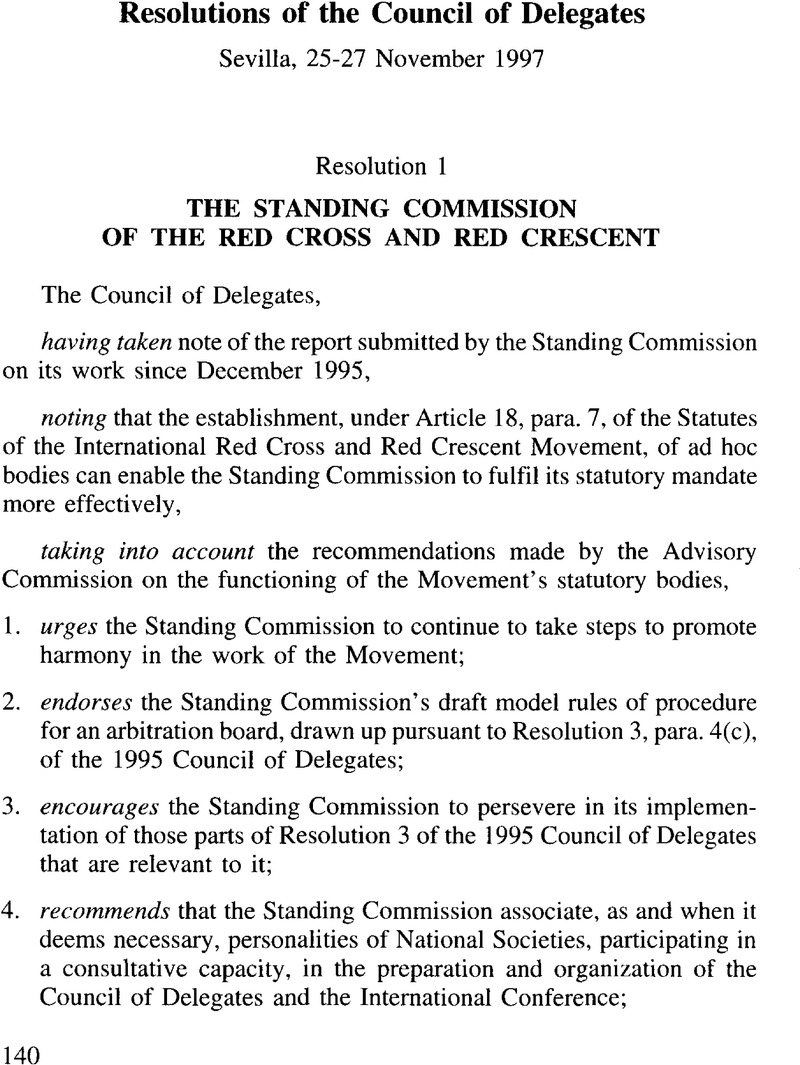No CrossRef data available.
Article contents
Resolutions of the Council of Delegates
Published online by Cambridge University Press: 23 November 2010
Abstract

- Type
- In the Red Cross and Red Crescent world
- Information
- International Review of the Red Cross (1961 - 1997) , Volume 38 , Issue 322 , March 1998 , pp. 140 - 158
- Copyright
- Copyright © International Committee of the Red Cross 1998
References
1 “Criteria for evaluating possible solutions
On the basis of past and more recent discussions within the Movement on the plurality of the emblems, the following six criteria have been defined for judging any proposed solution:
1. Any solution must be assessed primarily in the light of the protection afforded to victims and must actually lead to an improvement in such protection.
2. Any solution must be based on the existence of the two emblems currently in use, that is, the cross and the crescent, which are de facto placed on an equal footing — even though such equality has not yet been enshrined in the Conventions — and which are known worldwide.
3. Any solution must avoid creating new obstacles for the Movement's ideal of unity and must, on the contrary, be compatible with that ideal.
4. Even though this ideal of unity naturally extends to the emblem, the objective of having a single emblem for both protective and indicative purposes is not on the agenda at present; the aim is to solve the problems mentioned on pages 9–12.
5. Any solution must be capable of settling these problems without creating new ones for National Societies which have no difficulties in this respect, and which must be able to carry on with their present emblems (status quo).
6. The issue of the emblem must not cause division within the Movement; any solution must be very widely acceptable and any resolution on this crucial matter must be adopted by consensus.”




